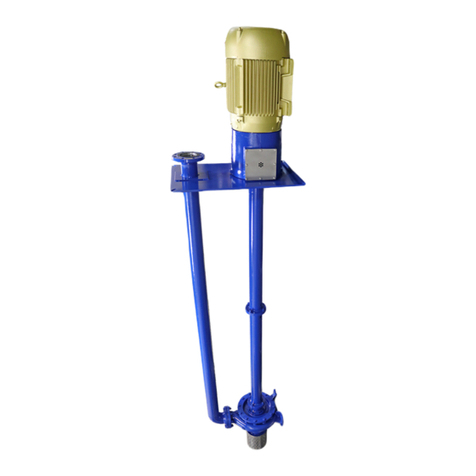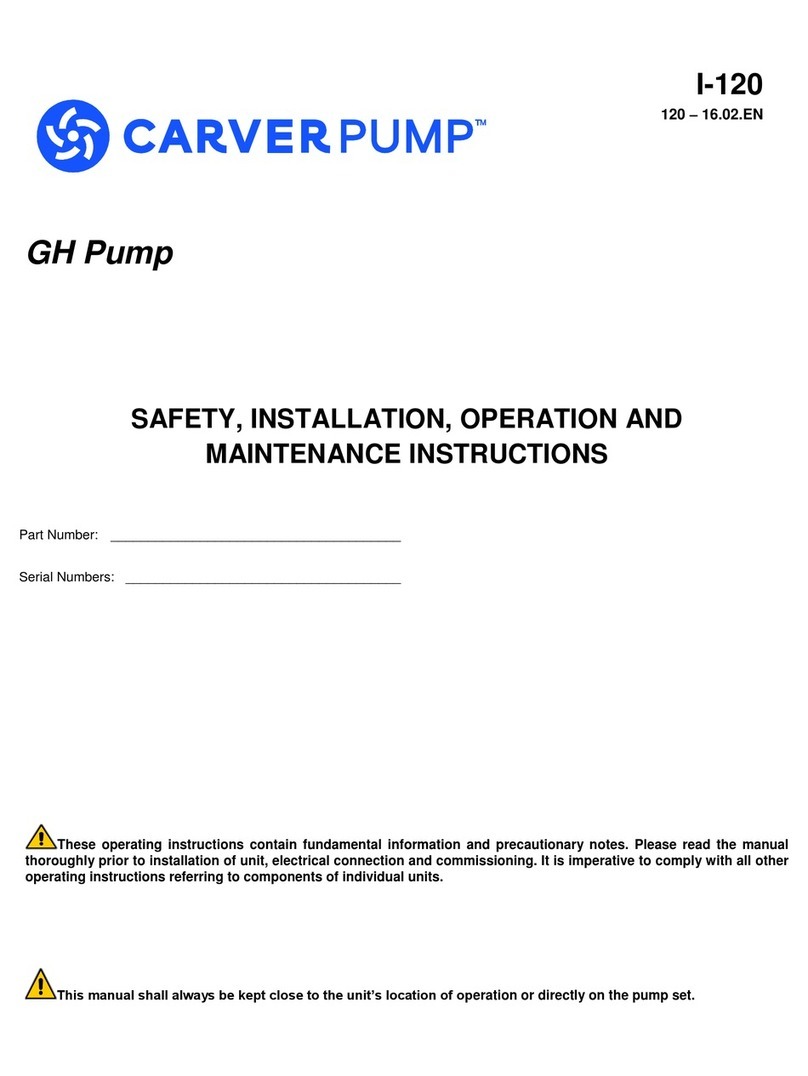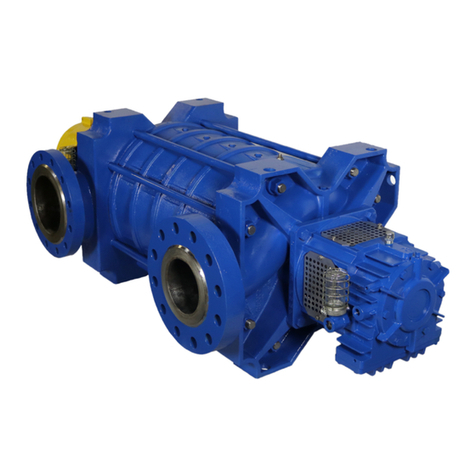
I-855
855 –Filtrate Pump 855-15.04.EN
2
E. PUMP IDENTIFICATION. The type of pump, pump
size, operating data, and serial number are all stamped
on the nameplate attached to the pump. Pump
specifications should be recorded upon receipt of the
pumping unit. Record all necessary information on the
pump service record page and inspection and repair
record provided at the front of this manual. This
information must be included in all correspondence
regarding the unit. This will ensure that the correct pump
and/or parts are ordered in a timely manner.
F. PARTS INVENTORY GUIDE. To avoid
unnecessary delays for maintenance, spare parts
should be readily available, purchase before and keep in
stock, for normal service. Most conditions will be
covered if this manual is followed. For every one to
three pumps, stock one spare set consisting of items
listed in Table 9, Recommended Spare Parts. Part
numbers correspond to Figures 15 and 16.
G. PARTS ORDERING. When ordering replacement
parts, please specify:
Model of pump (located on nameplate)
Serial number of pump (located on nameplate)
Part name (located on parts list)
Quantity of parts needed
Carver Pump Company may ship an interchangeable
part that is not identical in appearance or symbol. This is
done only if the part has been improved. Examine parts
carefully upon delivery before questioning factory or
company representative. Never return parts to the
factory without authorization from Carver Pump
Company.
If an impeller is ordered, specify diameter across blade
tips. Be sure diameter was NOT trimmed further than
diameter shown on Carver Pump Company records.
If a driver or driver parts are ordered, specify name of
manufacturer and all other data found on the driver
nameplate.
H. UNAUTHORIZED MODIFICATION AND
MANUFACTURE OF SPARE PARTS. Modifications or
alterations of the pumping unit supplied are only
permitted after consultation with Carver Pump and to the
extent permitted by Carver Pump. Original spare parts
and accessories authorized by Carver Pump ensure
safety. The use of other parts can invalidate any liability
of Carver Pump for consequential damage and/or
warranty.
I. UNAUTHORIZED MODES OF OPERATION. The
warranty relating to operating reliability and safety of the
unit supplied is only valid if the pumping unit is used in
accordance with its designated use as described in the
following sections. The limits stated on the nameplate
must not be exceeded under any circumstances.
II. SAFETY.
A. SAFETY PRECAUTIONS. The manual is designed
to provide adequate instructions for the safe and
efficient installation, operation, or maintenance of the
pump. Failure or neglect to properly install, operate, or
maintain the pump may result in personal injury,
property damage, or unnecessary damage to the pump.
This manual must be read and understood both by the
installing personnel and the responsible trained
personnel/operators prior to installation and operation,
and it must always be kept close to the location of the
pumping unit for easy access.
B. SUMMARY OF SAFETY MARKING. The safety
instructions contained in this manual where non-
observance of the instruction will cause a hazard is
specially marked with the symbol:
General hazard sign to ISO 7000 - 0434.
Notes highlight an operating or maintenance procedure,
condition, or statement which is essential, but is not of
known hazardous nature as indicated by DANGERS,
WARNINGS and CAUTIONS.
The word "CAUTION" is used to introduce safety
instructions whose non-observance may lead to damage
to the machine and its functions.
The word "WARNING" is used to introduce safety
instructions whose non-observance may lead to a
potential hazard exists, capable of producing injury to
personnel, if approved procedures are not followed.
The word “DANGER” indicates a location, equipment, or
system where imminent hazards exist, capable of
producing immediate injury or death to personnel, if
approved procedures are not followed.
Instructions attached directly to the machine, e.g.
Arrow indicating the direction of rotation
Markings for fluid connections must always be
complied with and be kept in a perfectly legible
condition at all times.
Observe all notes, caution or danger tags attached to
the equipment or included in this manual.

































